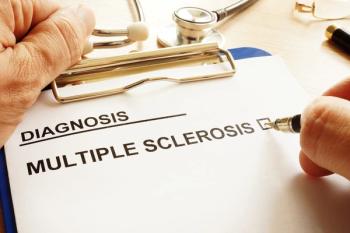
Criteria for Diagnosing and Assessing MS
Amit Bar-Or, MD, FRCP, FAAN, FANA: Multiple sclerosis [MS] is still misdiagnosed, and one can consider misdiagnosis in terms of indicating that someone does not have multiple sclerosis when they actually do, as well as making a diagnosis of multiple sclerosis in someone who in fact does not have it. We’ve certainly improved our diagnostics overall, especially with the magnetic resonance imaging [MRI] over time. And, at the same time, with the availability of treatments, there are more and more people who are inclined to make a diagnosis of MS. Whereas in years past, given the absence of treatments, people would often avoid making a diagnosis because there was not much that could really be done about it.
The frequency of misdiagnosis nowadays is estimated variably to be as low as a few percent, or as frequent as 20%. It very much depends on whether someone is seen in a place that is very experienced with multiple sclerosis diagnosis versus elsewhere. And there are people whose clinical course will be very classic, making the diagnosis quite straightforward, but there will still be those in whom the clinical features, even the imaging features, may not be as obvious, requiring some years of followup before the correct diagnosis is ascertained.
The McDonald criteria for diagnosing multiple sclerosis have evolved over the years, through several different iterations. But the principle remains of wanting to meet the 3 diagnostic criteria, which include demonstration that there’s multiplicity in space, meaning multiple aspects of the central nervous system pathways involved; multiplicity over time, meaning that there is some ongoing disease activity or progression over time; and exclusion of other diagnoses that can look like MS. The iterations of the McDonald criteria have included the use of MRI earlier and earlier to establish the diagnosis, such that with the most recent iteration, we can actually establish the diagnosis with a single clinical presentation through an MRI series of features that are sufficiently supportive of multiple sclerosis.
Spinal fluid analysis is also used as an adjunct in the diagnosis of multiple sclerosis. It’s not always necessary if the clinical and imaging criteria fulfill diagnostic features. Sometimes the spinal fluid can be helpful, particularly if it shows presence of abnormal increased levels of antibodies and oligoclonal banding pattern on a gel, which reflect some chronicity or ongoing active inflammation as a fingerprint or common feature of multiple sclerosis. Though, there is no single cerebrospinal fluid [CSF] or spinal fluid diagnostic test that is unique to multiple sclerosis.
Barry Hendin, MD: One of the ways we look at MS is with the EDSS, or the Expanded Disability Status Scale. Although we may criticize it because we say it is a nonlinear scale, it’s insensitive in certain ways, and it doesn’t tell us enough about cognition or enough about other symptoms going on, it may tell us more importantly about lower extremities strength and gait. Still, it is the common language. Every clinical trial has EDSS if they’re looking at relapses. So it is an imperfect but widely used scale. And for neurologists, at least it’s a way of speaking to each other regarding severity of illness in a way that we generally can understand.
Amit Bar-Or, MD, FRCP, FAAN, FANA: The Expanded Disability Status Scale or EDSS, as it’s referred to, is still the most commonly used approach for assessing the state of neurological disability in patients with MS, particularly incorporated into clinical trials, although used in many practices as well. It is a scale that goes from 0, meaning no disability, up to 10, which means death from multiple sclerosis, and it has several points along the scale where patients transition in terms of their neurological function and impairment. The EDSS scale, although commonly used, is imperfect. It has a bimodal distribution. It is not as amenable to statistical analysis, and it very much has weight placed on ambulation above a certain level of disability. The only thing that counts is the ability to ambulate, and of course, that misses some very important neurological domains, including psychological function, fatigue, visual acuity, upper extremity function, and so on. So clinicians who follow patients in the clinic and increasingly in clinical trials may add to the EDSS other domains that better capture the patient’s experience over time.
Newsletter
Stay ahead of policy, cost, and value—subscribe to AJMC for expert insights at the intersection of clinical care and health economics.









































